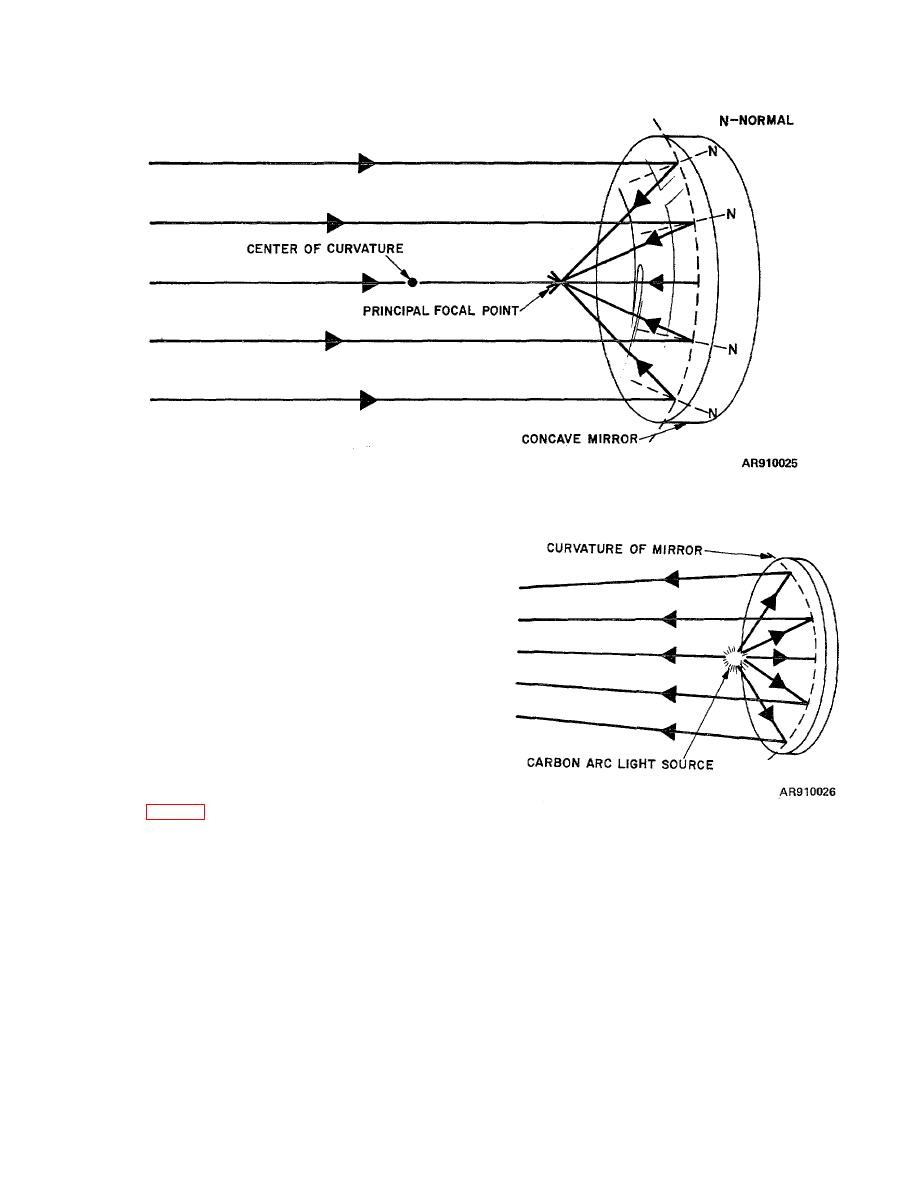 |
|||
|
|
|||
|
Page Title:
Figure 2-19. Reflection from concave mirror. |
|
||
| ||||||||||
|
|
 TM 9-258
Figure 2-19. Reflection from concave mirror.
b. It will be noted that the rays originating from an
infinite (distance) source, such as the sun, are
converging after reflection and that they intersect very
close to a point halfway between the center of curvature
and the surface of the mirror. This point is known as the
principal focal point of the mirror. This point of principal
focus is always one-half of the distance from the center
of curvature to the surface of a concave mirror, provided
the mirror is a true portion of a sphere. Due to "spherical
aberration, " the principal focus is a true point only for a
small central bundle of rays. After passing through the
focal point, the light will diverge.
c. If a very small luminous source is located at the
principal point of focus, the rays will be nearly parallel
after reflection. This is true only if the curvature is very
slight. Actually, the rays will have a slight convergence,
especially those which are reflected from near the edges
Figure 2-20. Projection by spherical mirror.
of the mirror (fig 2-20). For this reason, if it is desired to
have practically parallel rays after reflection, a parabolic
mirror is used.
2-14
|
|
Privacy Statement - Press Release - Copyright Information. - Contact Us |